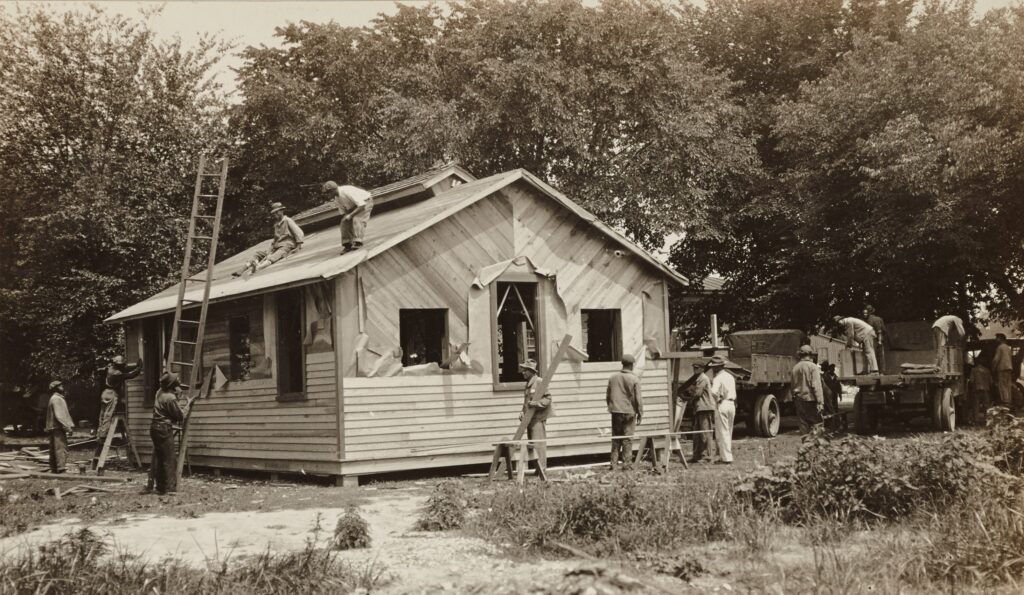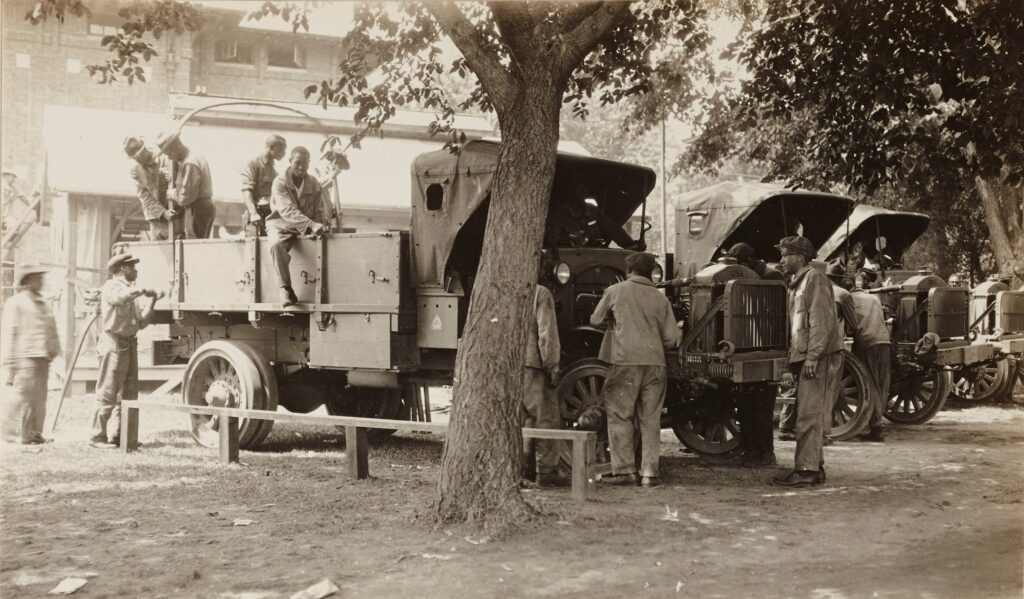A Successful Unit
Of the three schools in Virginia authorized to have a vocational training section of the SATC, Hampton University was the only HBCU.1 The school began as a camp for formerly enslaved African Americans in 1861 and by the First World War, had evolved into a thriving HBCU with distinguished alumni like Booker T. Washington.2 In the 1880s and 1890s, Hampton established the Armstrong-Slater Trade School, which offered classes in “farming, carpentry, harnessmaking, printing, tailoring, clocksmithing, blacksmithing, painting, and wheelwrighting.”3 These programs were so successful that “by 1904, nearly three-fourths of all boys at Hampton were taking trades classes.”4 The excellent trade program at Hampton made it a prime candidate for providing vocational training for the Army.

Utilizing its excellent trade school, the War Department authorized Hampton to house a National Training Detachment (NTD) in mid-1918. The Hampton NTD had an A Company, B Company, Headquarters Company, and a Medical Detachment.5 African American men in these companies participated in the NTD training program and when the SATC was established in the Fall of 1918, the Hampton NTD became an SATC B section, continuing to offer vocational training.

As an NTD and a SATC B Section, Hampton Institute was successful in training African American men for service in the Army. In the National Archive, there are numerous orders and reports authorizing the transfer of NTD and SATC men to Camp Jackson, South Carolina, Camp Lee, Virginia, Fort Monroe, Virginia, and Camp Humphreys, Virginia to utilize their vocational skills.6
White Supremacy & “Attributes of Manhood”
Despite the effectiveness of Hampton’s NTD and SATC units, the Army’s white supremacist attitudes were still present. Given the War Department’s view of black officers, the SATC officers at Hampton, including the unit commander Captain Robert H. Neely, were most likely white.
At the end of September 1918, Captain Neely, the unit commander, ordered that:

There is no evidence of similar orders at other Virginia SATC institutions, either due to them being lost in the 100 plus years since the SATC or that the orders were never issued. Regardless, the fact that African Americans were ordered to attend church every Sunday highlights the prevalence of the War Department’s belief that African Americans “lacked the requisite attributes of manhood.”8 It is likely that this order was issued by Captain Neely in an attempt to instill these attributes into African American SATC soldiers under his command. The mandatory attending requirement and the stipulation of attending “in complete uniform equipment” point to this being an attempt to morally educate black soldiers.
Notes:
- Student Army Training Corps Descriptive Circular dated October 14, 1918, 5, Box 3, Folder 8, Records of the Dean of the College, Theodorick Pryor Campbell, RG 11/1, Special Collections and University Archives, Virginia Tech, Blacksburg, VA.
- “History – Hampton University About,” accessed March 3, 2023, https://home.hamptonu.edu/about/history/.
- “History – Hampton University About,” accessed March 3, 2023, https://home.hamptonu.edu/about/history/.
- “History – Hampton University About,” accessed March 3, 2023, https://home.hamptonu.edu/about/history/.
- Special Order No. 14 dated August 16, 1918, National Archives RG 165 NM-84 Entry 412 Box 211 Folder S.A.T.C. Hampton Institute.
- Special Orders No. 20 dated August 27, 1918, National Archives RG 165 NM-84 Entry 412 Box 211 Folder S.A.T.C. Hampton Institute; Special Orders No. 23 dated September 3, 1918, National Archives RG 165 NM-84 Entry 412 Box 211 Folder S.A.T.C. Hampton Institute; Special Orders No. 38 dated October 13, 1918, National Archives RG 165 NM-84 Entry 412 Box 211 Folder S.A.T.C. Hampton Institute; Special Orders No. 47 dated November 4, 1918, National Archives RG 165 NM-84 Entry 412 Box 211 Folder S.A.T.C. Hampton Institute; Special Orders No. 48 dated November 20, 1918, National Archives RG 165 NM-84 Entry 412 Box 211 Folder S.A.T.C. Hampton Institute; Special Orders No. 50 dated December 20, 1918, National Archives RG 165 NM-84 Entry 412 Box 211 Folder S.A.T.C. Hampton Institute.
- General Order No. 8 dated September 29, 1918, National Archives RG 165 NM-84 Entry 412 Box 211 Folder S.A.T.C. Hampton Institute.
- Chad Louis Williams, Torchbearers of Democracy: African American Soldiers in the World War I Era (University of North Carolina Press, 2010), 39.